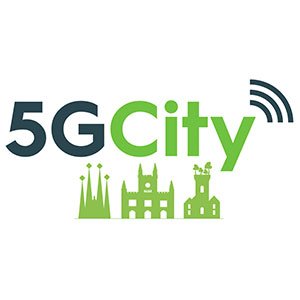
Keep up to date with our innovative initiatives.
Sign up here

Coordinated by i2CAT
Started at: 01-06-2016
Ends on: 31-05-2019
Budget: 900,000 €
Areas: 5G & IoT - Software Defined Networks
The project aims to Build and deploy a common, multi-tenant open platform that extends the (centralized) cloud model to the extreme edge of the network. Such a model directly enables a cloud-like 5G infrastructure capable of supporting rapid, dynamic, and customisable deployment and operation of virtualised network functions (VNFs) and services, or network apps composed of those virtualised elements. A municipality will host thousands of 5G Small Cells with processing and storage capabilities. Thus, it will become itself a huge distributed cloud infrastructure, which can be seen as an open environment for service deployment. From a technical perspective, evolving cloud architectures and adapting them to the edge of the network within the 5G ecosystem brings a number of open challenges.
– Deployment and run-time management of densely interconnected and decentralized cloud and network infrastructures.
– Tight-loop interactions between the computing and networking infrastructures at the edge of the network.
– Performance issues arising from the use of resource-constrained devices (e.g., Single Board Computers with ARM processors) placed at the edge of the network to perform workloads that have been traditionally carried out by powerful servers in centralized data centers.
Slicing and neutral hosting support at the wireless edge, where bandwidth needs to be guaranteed for different slices (e.g. media), and tenant-specific counters need to be added to support elastic usage and billing of resources.
Recent developments in cloud technologies and their deployment are pointing towards the realization of novel, heterogeneous and distributed cloud paradigms, which differ from traditional tried-and-tested centralised, mostly homogeneous (i.e., x86 servers based on Xeon processors) model. One of these new paradigms is called edge computing, which calls for the extension of cloud architectures all the way to the edge of the network, close to the devices that produce and act on data. The value proposition of this new model is that:
– It can process data close to where they are collected thus minimizing processing latency
– It offloads gigabytes of network traffic from the core network and
– It keeps sensitive data inside the network itself.
5GCity will directly impact a large and varied range of actors: (i) telecom providers; (ii) municipalities; and (iii) a number of different vertical sectors utilizing the city infrastructure. The real strength of 5GCity, in terms of real-world impact, lies in the envisioned deployment of its 5G-based edge platform in three distinct smart cities: Barcelona, Lucca and Bristol, which is foreseen as a concrete first step towards 5G trials. Other expected impact of 5GCity project includes, i) Open environments for creation of network apps, ii) Open repository of network apps that may be validated and leveraged by third party developers, iii) Validation at scale of VNF aggregation capability of the proposed environment.
















This project has received funding from the European Union’s Horizon 2020 research and innovation programme under grant agreement No 761508.